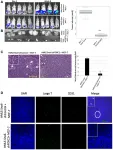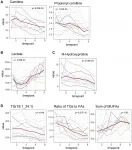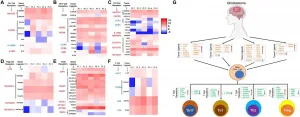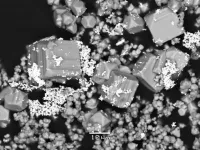(Press-News.org) MADISON, Wis. -- About 100 additional wolves died over the winter in Wisconsin as a result of the delisting of grey wolves under the Endangered Species Act, alongside the 218 wolves killed by licensed hunters during Wisconsin's first public wolf hunt, according to new research.
The combined loss of 313 to 323 wolves represents a decline in the state's wolf population of between 27% and 33% between April 2020 and April 2021. Researchers estimate that a majority of these additional, uncounted deaths are due to something called cryptic poaching, where poachers hide evidence of illegal killings.
The findings are the first estimate of Wisconsin's wolf population since the public hunt in February, which ended early after hunters exceeded the quota of 119 wolves within a few days. These population estimates can help the Wisconsin Department of Natural Resources (DNR) prepare for the next legally mandated wolf hunt this fall.
They also provide guidance to other states planning wolf hunts following the removal of federal protections announced in November 2020 and effective January 2021.
University of Wisconsin-Madison environmental studies scientists Adrian Treves, Francisco Santiago-Ávila and Karann Putrevu performed the research, which was published July 5 in the journal PeerJ.
Under a variety of population growth scenarios, the researchers estimate that Wisconsin now hosts between 695 and 751 wolves, compared with at least 1,034 wolves last year. The scientists say this likely represents the maximum current wolf population, because they incorporated optimistic assumptions about population growth and low poaching rates into their models.
This decline is despite the hunting quota of 119 wolves for non-native hunters, set with the goal of helping maintain but not reduce the state's wolf population. Ojibwe Tribes were granted a quota of 81 wolves, but they did not conduct a hunt.
"Although the DNR is aiming for a stable population, we estimate the population actually dropped significantly," says Treves, a professor in the Nelson Institute for Environmental Studies and director of the Carnivore Coexistence Lab at UW-Madison.
The new study suggests that about one-third of the population decline is due to hidden deaths in the wolf population, resulting from relaxed legal protections.
Previous research by the Treves lab showed that wolf population growth declined in Wisconsin and Michigan when legal protections were relaxed, regardless of the number of wolves legally killed. And Santiago-Ávila led research that found that Wisconsin's wolves and the heavily monitored Mexican wolves of the American Southwest disappeared at greater rates when lethal control methods were allowed.
Other studies by the lab of attitudes toward wolves suggest that when governments allow lethal management, would-be poachers are inclined to kill more wolves because the relaxed policies signal that predators are less valued.
Those previous findings helped Santiago-Ávila, Putrevu and Treves model the uncounted deaths in Wisconsin since last November.
"During these periods, we see an effect on poaching, both reported and cryptic. Those wolves disappear and you never find them again," says Santiago-Ávila, a postdoctoral researcher in the lab. "Additional deaths are caused simply by the policy signal, and the wolf hunt adds to that."
Treves and his team estimate that the population could recover in one to two years without hunting. Wisconsin law requires a wolf hunt between November and February when hunting is not prohibited by federal protections.
Following the federal delisting of wolves that became effective in January 2021, the DNR initially planned to conduct the first hunt in November 2021. But after a lawsuit, the DNR immediately implemented a wolf hunt at the end of February.
The research team hopes that the Wisconsin DNR and other states' natural resource agencies take advantage of their methods to develop a more complete assessment of the effect of new policies on predator populations.
"These methods and models are freely available to these agencies," says Putrevu, a doctoral student who also researches tiger populations in the Russian Far East. "They should take advantage of the best available science to meet their stated goals."
INFORMATION:
--Eric Hamilton, (608) 263-1986, eshamilton@wisc.edu
The theory that modern society is too clean, leading to defective immune systems in children, should be swept under the carpet, according to a new study by researchers at UCL and the London School of Hygiene & Tropical Medicine.
In medicine, the 'hygiene hypothesis' states that early childhood exposure to particular microorganisms protects against allergic diseases by contributing to the development of the immune system.
However, there is a pervading view (public narrative) that Western 21st century society is too hygienic, which means toddlers and children are likely to be less exposed to germs in early life and so become less resistant to allergies.
In this paper, published in the Journal of Allergy and Clinical Immunology, researchers point to four significant reasons which, ...
Research published today has demonstrated the viability of 3D-printed tissue scaffolds that harmlessly degrade while promoting tissue regeneration following implantation.
The scaffolds showed highly promising tissue-healing performance, including the ability to support cell migration, the 'ingrowth' of tissues, and revascularisation (blood vessel growth).
Professor Andrew Dove, from the University of Birmingham's School of Chemistry, led the research group and is the lead author on the paper published in Nature Communications, which characterises the physical properties of the scaffolds, and explains how their 'shape memory' is key to promoting tissue regeneration. ...
Flies have discriminating taste. Like a gourmet perusing a menu, they spend much of their time seeking sweet nutritious calories and avoiding bitter, potentially toxic food. But what happens in their brains when they make these food choices?
Yale researchers discovered an interesting way to find out. They tricked them.
In a study that could also help illuminate how people make food choices, the researchers gave hungry fruit flies the choice between sweet, nutritious food laced with bitter quinine and a less sweet, but not bitter, food containing fewer calories. Then, using neuroimaging, they tracked neural activity in their brains as they made these tough choices.
So which won? Calories or better taste?
"It depends on how hungry they are," said Michael Nitabach, professor of ...
Researchers at Uppsala University have discovered lymph node-like structures close to the tumour in brain cancer patients, where immune cells can be activated to attack the tumour. They also found that immunotherapy enhanced the formation of these structures in a mouse model. This discovery suggests new opportunities to regulate the anti-tumour response of the immune system.
Glioma is a deadly brain tumour with a dismal prognosis. One reason why brain tumours are very hard to treat is that our immune system, which is designed to detect and destroy foreign ...
Although most Canadians die from predictable causes and have health needs that can be met at home, only 20% of people receive a physician home visit in their last year of life.
To help understand the changing care needs of older adults as they age and when they might be nearing the end of their lives, a team of researchers developed the Risk Evaluation for Support: Predictions for Elder-Life in the Community Tool (RESPECT).
The calculator, which predicts death within 6 months, is based on data from more than 491 000 community-dwelling older adults who used home care in the 6-year period between 2007 and 2013.
"The RESPECT calculator allows families and their loved ...
Oncotarget published "Carcinoma cells that have undergone an epithelial-mesenchymal transition differentiate into endothelial cells and contribute to tumor growth" which reported that the authors investigated whether EMT can confer endothelial attributes upon carcinoma cells, augmenting tumor growth and vascularization.
Hypoxic regions, demarcated by HIF-1α staining, exhibited focal areas of E-cadherin loss and elevated levels of vimentin and the EMT-mediator FOXC2. Implantation of MCF-7 cells, co-mixed with human mammary epithelial cells overexpressing the EMT-inducer Snail, markedly ...
Oncotarget published "Perioperative changes in the plasma metabolome of patients receiving general anesthesia for pancreatic cancer surgery" which reported that little is known about the impact of anesthesia on the plasma metabolome, although many metabolites have been shown to modulate the function of various immune cells, making it particularly interesting in the context of oncological surgery.
In this study longitudinal dynamics in the plasma metabolome during general anesthesia in patients undergoing pancreatic surgery were analyzed.
Prospective, observational study with 10 patients diagnosed with pancreatic malignancy and subjected to elective resection surgery under general anesthesia.
Plasma metabolites were quantified at ...
Oncotarget published "Genome wide DNA methylation landscape reveals glioblastoma's influence on epigenetic changes in tumor infiltrating CD4+ T cells" which reported that whole-genome bisulfite sequencing of tumor infiltrating and blood CD4 T-cell from GBM patients showed 13571 differentially methylated regions and a distinct methylation pattern of methylation of tumor infiltrating CD4 T-cells with significant inter-patient variability.
The methylation changes also resulted in transcriptomic changes with 341 differentially expressed genes in CD4 tumor infiltrating T-cells compared to blood.
Analysis of specific genes involved in CD4 differentiation and function revealed differential methylation status of TBX21, GATA3, RORC, FOXP3, IL10 and ...
Inadequate exposure to UVB light from the sun may be associated with an increased risk of colorectal cancer, particularly in older age groups, according to a study using data on 186 countries, published in the open access journal BMC Public Health.
Researchers at the University of California San Diego, USA investigated possible associations between global levels of UVB light in 2017 and rates of colorectal cancer for different countries and age groups in 2018.
The authors found that lower UVB exposure was significantly correlated with higher rates of colorectal cancer across all ...
Why are gold deposits found at all? Gold is famously unreactive, and there seems to be little reason why gold should be concentrated, rather than uniformly scattered throughout the Earth's crust. Now an international group of geochemists have discovered why gold is concentrated alongside arsenic, explaining the formation of most gold deposits. This may also explain why many gold miners and others have been at risk from arsenic poisoning. This work is presented at the Goldschmidt conference, after recent publication*.
Gold has been prized for millennia, for its purity and stability. It's also rare enough to retain its value - the World Gold Council estimates that all the gold ever mined in the world would fit into a 20x20x20-meter cube. It is valued for its beauty, but also because it ...



